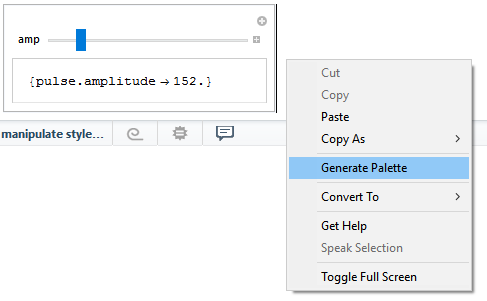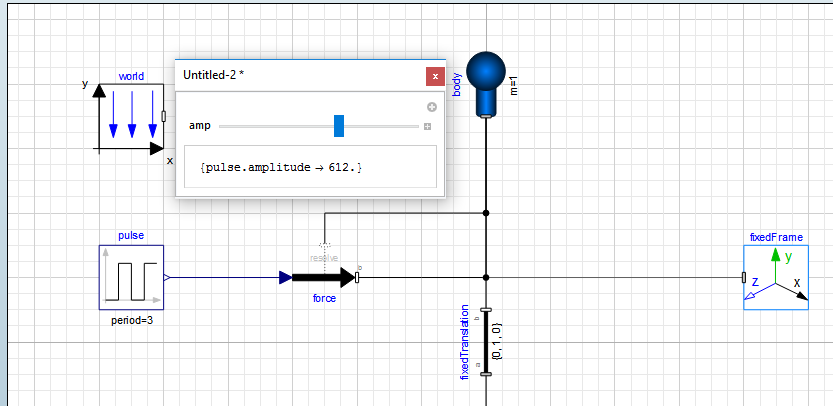That picture looks like nice! Glad that you are on your way!
- What does "Frame in which input force is resolved" mean ?
When you specify a force you specify x,y,z coordinates. Since bodies can be rotated it is often ambiguous which coordinate system (or frame) to use.

In the above picture (from attached model, ResolveForce.mo) I rotated a rod 180 degrees around the y-axis. You can see the result from comparing the two animated frames/axes. I then applied a force of a certain magnitude along the x-axis. This force was resolved in frameb which meant it used the rotated coordinate system. If it had been resolved in the world frame, the arrow would be pointing to the left (along the original x-axis). You can also choose where in the system to resolve your frame by choosing frameresolve and connecting the dotted frame to a part of your system. In the attached model, I chose that, so if you want, you can try different frames to connect it to. (Though in that small model, there will only be two outcomes, one that is the same as the world frame, and one that is the same as frame_b).
I think most of the time you will want to resolve your forces in the world frame, it is more intuitive to think along the lines of x,y,z coordinates. Its for integrated engineering tasks you mostly have to think about how you resolve things.
- Also, is there an option somewhere to have forces vectors "nose out" ?
There does not seem to be one. You can however use the Modelica.Mechanics.MultiBody.Visualizers.SignalArrow visualizer. It will define an arrow that starts at the position given by framea and extends along a vector given by the 3-dimensional signal. This will always be resolved in framea however. See ForceArrow.mo.

- Can I setup the initial position of the camera ?
No sorry, I do not think so!
- I would like to have sliders to easily setup my simulation, just like in this demonstration. Are they available in SM as in Mathematica ?
There are no sliders in SystemModeler but as you mentioned, there are sliders in Mathematica, and that makes them kind of in SystemModeler too, through WSMLink.
For example, the following Mathematica code will create a slider that sets amplitude of the applied force in the ResolveForce model.
Needs["WSMLink`"]
mod = "ResolveForce";
Manipulate[
WSMSetValues[mod, {"pulse.amplitude" -> amp}],
{amp, 0, 1000},
ContinuousAction -> False]
You can for example generate a palette to use only the control part.


What is it that you want to set up with sliders and controls?
 Attachments:
Attachments: